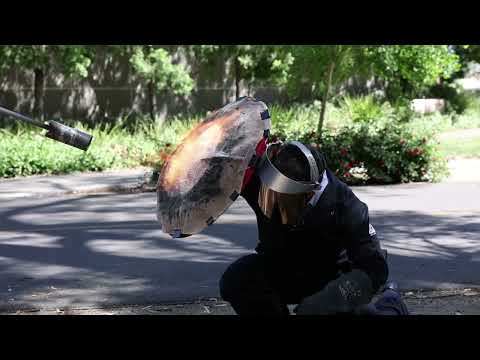At the beginning of 2024, about 144 new species were added to Australia’s growing list of animals threatened with extinction. Roughly 2,000 native animal and plant species are currently at risk of extinction in the continent-sized nation. The government announced their Stage 2 Nature Positive Plan that includes more funding for endangered species in April, but conservationists continue to worry that it might not be enough to protect the biodiversity hotspot.
One of those animals at risk of disappearing is the flightless southern cassowary bird. Perhaps the closest thing we have to a living, breathing dinosaur, these five-feet-tall birds stalk rainforests in Australia, New Guinea, and some Pacific islands with razor sharp four-inch-long talons and brilliant blue beaks.
“When you first look at them eye to eye, that can be intimidating, because they’ve got big eyes, and they look straight at you and they do look a bit fierce,” Peter Rowles, the president of Community for Coastal and Cassowary Conservation (C4), told AFP.

Cassowaries are “naturally cranky” and known to be quite territorial. In 2019, a man in Florida was killed by his pet cassowary. The bird allegedly killed the man in Gainsville when he fell near the site and state wildlife officials said he was breeding cassowaries on his property. However, they are not outwardly aggressive if they are left alone.
“Cassowaries are amazing species and whenever you get to see them in the wild is fantastic,” Darren Grover, World Wide Fund for Nature (WWF) Australia’s acting chief conservation officer, told AFP. “But be careful because they are naturally cranky birds, they are big and powerful and we need to give them some space.”
[Related: Ancient humans might have bred one of the scariest birds on the planet.]
The name cassowary originates from the Papuan word for ‘horned’ (kasu) and ‘head’ (weri). There are three species of these velociraptor-like birds–the southern cassowary, northern cassowary, and dwarf cassowary. All are members of a group called the ratites, which includes ostriches, rheas, and emus who are also giant flightless birds.
There are less than 5,000 territorial birds left in Australia and are listed as endangered. Cassowaries are considered a keystone species for the crucial role they play in the rainforests of northeast Australia. Their roughly 165-pound bodies help disperse seeds and maintain biodiversity in the ecosystem. The rainforests will suffer if these fearsome birds go extinct, so by ensuring their survival, the rainforests and numerous other species that live there are also protected.
The primary threats to these predators are car strikes, habitat loss, attacks by dogs, and climate change. In response, conservation groups have added signs urging drivers to slow down, worked to redesign local roads to better protect local habitats, and also runs an infirmary for injured cassowaries.
However, the WWF expects that Australia’s extinction rate will only continue to get worse. In roughly 335 years, about 100 of Australia’s unique plant and animal species have gone extinct, including the Christmas Island forest skink, and about 10 percent of the 320 land mammals known to have lived in Australia when European colonization began.
[Related: We were very wrong about birds.]
In 2007, the Australian government implemented a national plan to save the bird along with other species that included working with Indigenous and conservation groups. Last August, the government released a new report aiming to secure the southern cassowary’s future, including land buybacks, better road signage, and education for dog owners. Still, some conservation groups had doubts about how far the plan can actually go.
“It is a guideline; it’s a law,” conservationist from the Cassowary Recovery Team Jax Bergersen told the Australian Broadcasting Corporation. “We can have all the good thoughts under the sun, and we can lobby governments and councils for various things that are going to be of benefit, but we don’t have the strength as a group to make changes.”





